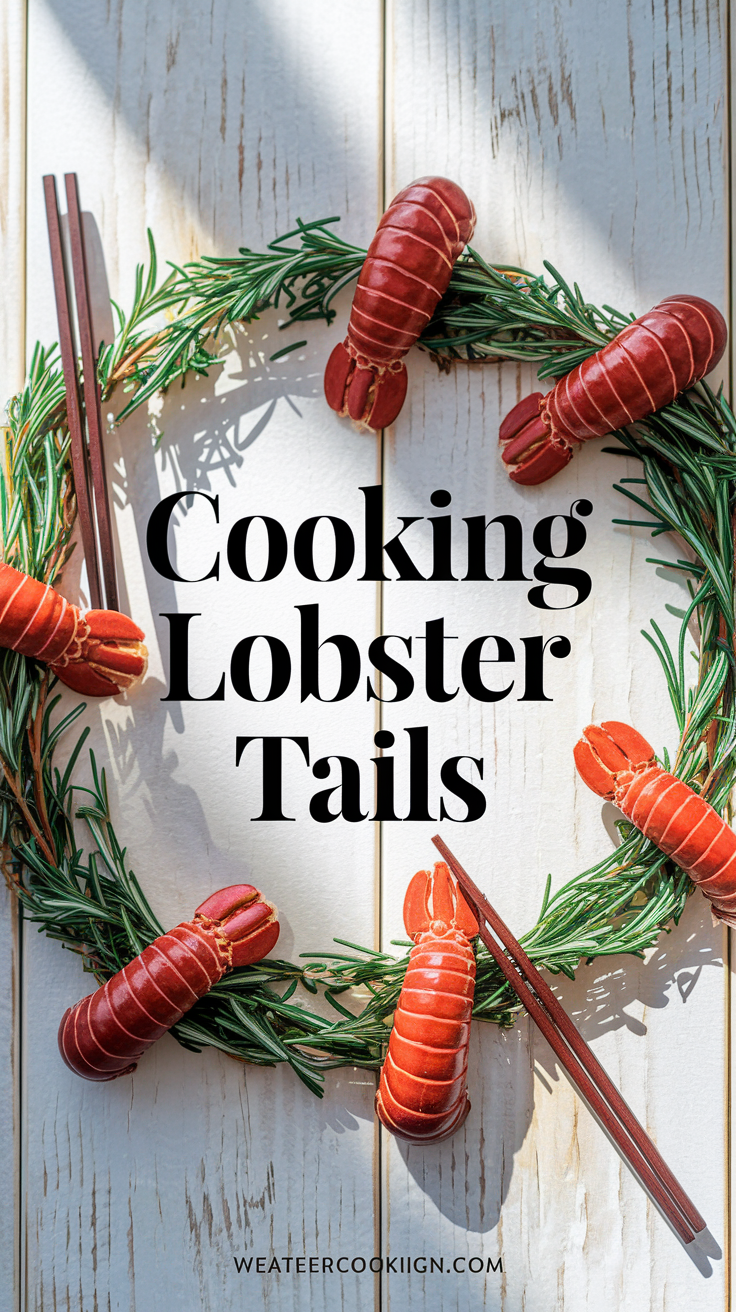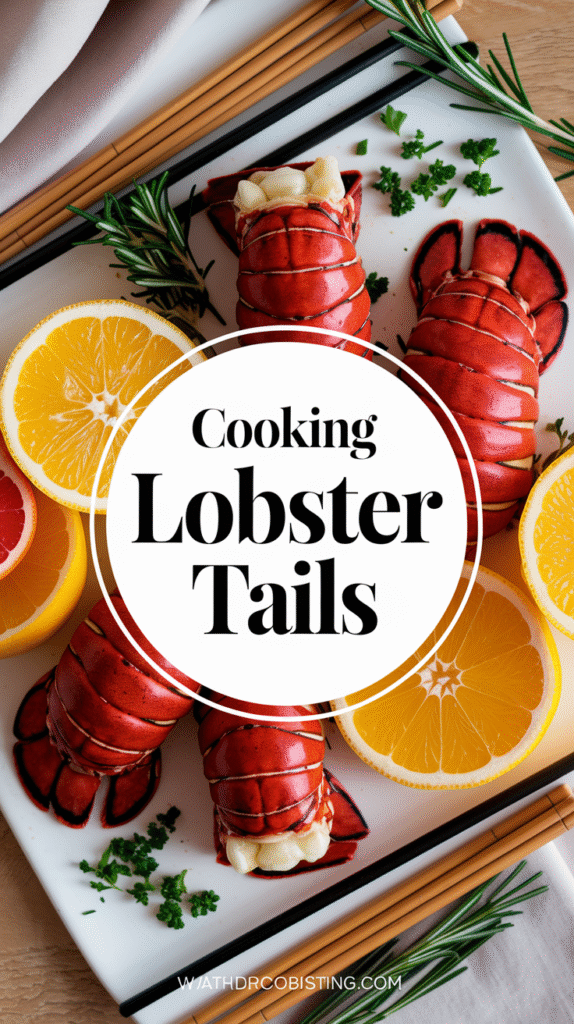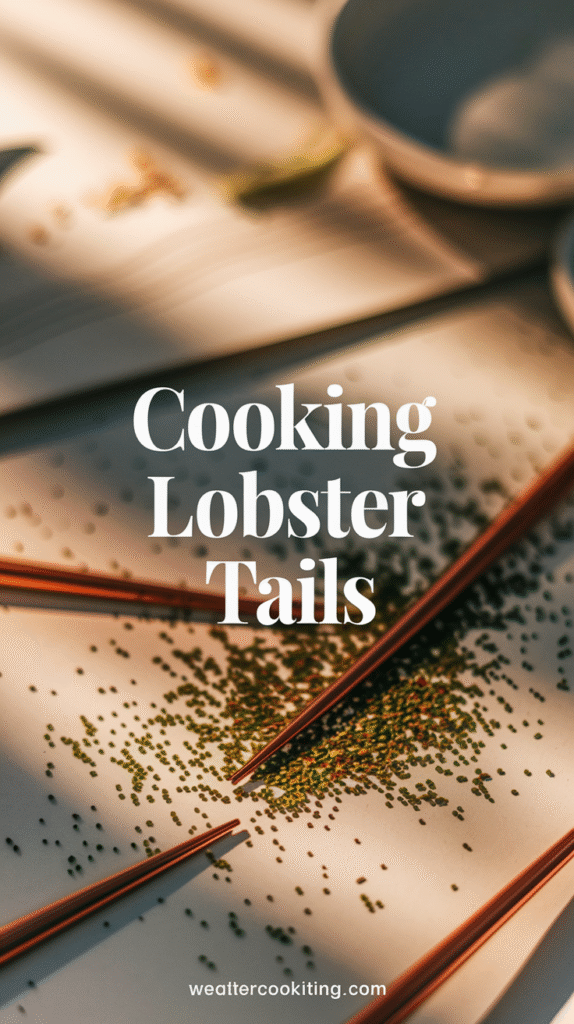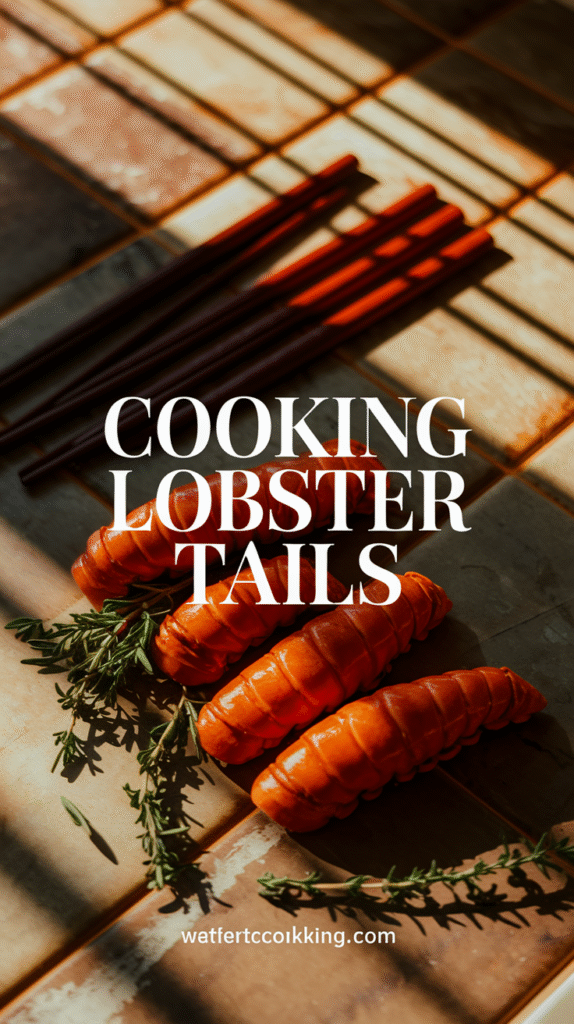Cooking lobster tails can seem daunting, but with the right techniques, you can impress your friends and family with a restaurant-quality dish. Whether you choose to boil, steam, grill, or bake your lobster tails, mastering these methods will elevate your culinary skills. Here are some techniques and tips that will help you along the way.
Choosing the Right Lobster Tails
When cooking lobster tails, the first step is selecting high-quality seafood. Here’s what you should consider:
- Look for Freshness: Live lobsters are ideal, but if you buy frozen tails, ensure they are properly thawed.
- Size Matters: Tail sizes usually range from 4 to 16 ounces. Larger tails tend to be meatier.
- Check the Color: Fresh lobster tails should have a vibrant color, depending on the species—usually a mixture of reds, greens, or blues.
Preparing Lobster Tails
Once you have chosen your lobster tails, proper preparation is essential. Here’s how to get started:
- Thawing (if frozen): Place frozen lobster tails in the refrigerator overnight or submerge them in cold water for quicker thawing.
- Cutting the Shell: Use kitchen scissors to cut the top shell of each tail. Be careful not to cut the meat beneath.
- Lifting the Meat: After cutting, gently lift the lobster meat through the shell. This helps it cook evenly.
Cooking Techniques for Lobster Tails
Now that your lobster tails are prepared, you can choose from a variety of cooking methods:
Boiling
This is one of the simplest methods:
- Fill a pot with water and add salt (2 tablespoons for every 4 quarts of water).
- Bring the water to a boil, then add the lobster tails.
- Boil for about 1-2 minutes per ounce of tail.
- Remove when the meat is opaque and white.
Steaming
Steaming allows for a tender texture:
- Fill a pot with about 2 inches of water.
- Place a steaming rack inside and bring the water to a boil.
- Add the lobster tails, cover, and steam for about 7-10 minutes based on size.
Grilling
If you prefer a smoky flavor, grilling is ideal:
- Preheat the grill to medium heat.
- Brush the meat with melted butter or olive oil for added flavor.
- Grill for about 5-7 minutes, flipping halfway through.
Baking
Baking is another great option for cooking lobster tails:
- Preheat your oven to 350°F (175°C).
- Place the lobster tails on a baking sheet, buttered side up.
- Bake for 10-15 minutes, or until the meat is white and flaky.
Serving Suggestions
Once your lobster tails are cooked, the presentation can enhance the dining experience. Here’s how to serve lobster tails effectively:
- Serve with melted butter and lemon wedges for dipping.
- Pairs well with sides like garlic mashed potatoes or grilled vegetables.
- Add a sprinkle of fresh herbs, such as parsley or chives, for color.
Storage Tips
If you have leftovers, handle them correctly:
- Store cooked lobster in an airtight container in the fridge for up to 2 days.
- For longer storage, freeze cooked lobster but be mindful of its texture upon reheating.
Cooking lobster tails can be a simple and rewarding endeavor. With these methods and tips, you’ll be able to enjoy this delicious seafood in your own home. For more recipes and tips, visit Maine Lobster Now or Lobster from Maine.
The Best Pairings: Sides and Sauces for Lobster Tails
Lobster tails are a delicacy that can elevate any meal, making you feel like you’re dining in a high-end restaurant without leaving your home. While the tails themselves are delicious with their sweet and tender meat, the right sides and sauces can truly enhance your dining experience. Let’s explore the best pairings that will make your lobster tail dish memorable.
Perfect Sides for Lobster Tails
When choosing sides for lobster tails, you want to create a balance of flavors and textures. Here are some excellent options:
- Garlic Butter Rice: This dish provides a rich and slightly nutty flavor that complements the sweetness of lobster. You can add a touch of lemon juice for acidity, accentuating the seafood taste.
- Steamed Asparagus: Asparagus offers a fresh, slightly crisp bite that contrasts nicely with the tender lobster. Drizzle with olive oil and sprinkle with sea salt for added flavor.
- Roasted Baby Potatoes: Crispy on the outside and fluffy inside, roasted potatoes with a hint of rosemary or thyme bring an earthy element to the plate.
- Coleslaw: A tangy coleslaw adds crunch and a refreshing element that pairs well with the richness of lobster. A vinaigrette-based slaw often works best.
- Grilled Corn on the Cob: The sweetness of grilled corn harmonizes well with lobster. Serve it with herb butter for a truly delicious pair.
These sides not only enhance the seafood but also provide a variety of textures and flavors, making your meal confident and satisfying.
Delicious Sauces to Accompany Lobster Tails
Sauces play an essential role in bringing out the best in lobster tails. Here are some sauce ideas that could be the stars of the show:
- Lemon Garlic Butter: A classic choice, this sauce combines melted butter, minced garlic, and fresh lemon juice. It enhances the natural sweetness of the lobster while adding a rich, buttery flavor.
- Spicy Aioli: If you enjoy heat, a spicy aioli made from mayonnaise, garlic, lemon juice, and your choice of hot sauce or sriracha can add zing to your meal.
- Coconut Cream Sauce: For a tropical twist, a coconut cream sauce with lime zest can give a unique flavor profile that pairs surprisingly well with lobster.
- Béarnaise Sauce: This herby sauce made from butter, egg yolks, white wine vinegar, and tarragon is elegant and elevates lobster tails to gourmet levels.
- Chimichurri: A vibrant herb sauce made with parsley, olive oil, garlic, and vinegar brings a fresh flavor that complements lobster beautifully.
Combining It All
When you serve your lobster tails, the combinations of sides and sauces can make a significant impact. Here are some pairing suggestions:
| Side | Recommended Sauce |
|---|---|
| Garlic Butter Rice | Lemon Garlic Butter |
| Steamed Asparagus | Béarnaise Sauce |
| Roasted Baby Potatoes | Chimichurri |
| Coleslaw | Spicy Aioli |
| Grilled Corn on the Cob | Coconut Cream Sauce |
Always remember to consider the flavors from both the sides and sauces to create a well-balanced plate. A good match will highlight the succulent flavors of the lobster while providing a satisfying experience.
For more cooking tips and recipes, visit Lobster Gram or for detailed lobster tail recipes, check out Food Network.
With the right sides and sauces, cooking lobster tails becomes not just a meal, but an occasion. Enjoy experimenting and delighting your guests with different combinations that can make each dining experience unique and unforgettable.
Health Benefits of Lobster: Why You Should Include It in Your Diet
Including lobster in your diet can be a delicious and nutritious option. This seafood is well-known for its rich flavor and unique texture, but it’s also packed with health benefits that may surprise you. Here are several reasons why you should consider adding lobster to your meals.
High-Quality Protein Source
Lobster is an excellent source of high-quality protein. A 3-ounce serving can provide about 28 grams of protein! This is essential for building and repairing tissues, making it a great choice for anyone looking to maintain a balanced diet.
Rich in Nutrients
- Vitamins: Lobster is rich in B vitamins such as B12, which plays a vital role in nerve function and the production of red blood cells.
- Minerals: It is a good source of important minerals like zinc and selenium. Zinc supports immune function, while selenium aids in thyroid function.
- Omega-3 Fatty Acids: Lobster contains omega-3 fatty acids, which have been linked to heart health and reduced inflammation in the body.
Low in Calories and Fat
If you’re watching your calorie intake, lobster is a smart choice. A serving of lobster typically contains fewer than 100 calories and is low in fat compared to other meats. This makes it a suitable option for those pursuing weight-loss goals or looking to maintain a healthy lifestyle.
Boosts Heart Health
The omega-3 fatty acids found in lobster can contribute to better heart health. These healthy fats help reduce levels of triglycerides, which can lower the risk of heart disease. Including lobster in a balanced diet, combined with fruits, vegetables, and whole grains, can lead to improved cardiovascular health.
Supports Brain Function
Adding lobster to your meals may also support brain health. The omega-3 fatty acids not only improve heart health but are also critical for cognitive function. Regular consumption of these fats can enhance memory and overall brain function, making lobster a worthy addition to your diet.
Promotes Healthy Skin
The combination of vitamins and minerals in lobster, including zinc and vitamin E, can promote healthy skin. These nutrients help in collagen production, which is important for maintaining skin elasticity and reducing signs of aging.
Easy to Prepare
Lobster can be prepared in various delicious ways. Whether you grill, steam, bake, or boil it, there are endless options to enjoy this seafood. Pair it with vegetables or whole grains for a wholesome meal. Here are some popular preparations:
- Classic boiled lobster served with drawn butter
- Grilled lobster tails brushed with garlic and olive oil
- Lobster mac and cheese for a comforting dish
- Chilled lobster salad with lemon vinaigrette
Ethical Considerations
When consuming lobster, it is essential to consider the source. Choose sustainably sourced lobster to support ocean conservation efforts. Resources like Seafood Watch can help you find sustainable options.
| Nutrient | Amount (per 3 oz serving) |
|---|---|
| Calories | 90 |
| Protein | 28g |
| Fat | 1g |
| Omega-3 Fatty Acids | 0.5g |
| Zinc | 1.5mg |
Lobster into your diet can provide a delicious taste experience while offering numerous health advantages. Remember to enjoy it as part of a balanced diet for optimal benefits.
For more detailed information about the health benefits of lobster and recipes, visit Lobster from Maine or check out Seafood Nutrition Partnership for healthy eating tips.
Exploring Different Cooking Methods for Lobster Tails: Boiling, Grilling, and More
Cooking lobster tails can truly elevate any meal, making it feel luxurious and delicious. Whether you’re having a special event or just want to treat yourself, mastering different methods of cooking lobster tails is essential. Below are a few popular methods that you can explore: boiling, grilling, baking, and broiling. Each technique offers a unique flavor and texture that can delight your taste buds.
Boiling Lobster Tails
Boiling is one of the simplest methods for preparing lobster tails and brings out their natural sweetness. Here’s a step-by-step approach:
- Fill a large pot with water, adding about 1 tablespoon of salt for every quart of water.
- Bring the water to a rolling boil.
- Carefully add the lobster tails and cover the pot.
- Cook for about 1-2 minutes per ounce of tail weight.
- Once cooked, the shells will turn bright red, and the meat should be opaque and tender.
This method is quick and allows you to infuse flavors by adding aromatics like lemon, garlic, or even bay leaves to the water.
Grilling Lobster Tails
Grilling lobster tails adds a smoky flavor that pairs beautifully with the sweetness of the meat. Here’s how you can achieve a perfectly grilled lobster tail:
- Preheat your grill to medium-high heat.
- Using kitchen scissors, cut the top of the shell to expose the meat without completely separating it from the shell.
- Brush the meat with melted butter and season with salt and pepper.
- Place the lobster tails on the grill, shell side down first.
- Cook for 5-6 minutes, then flip and grill for an additional 3-5 minutes, basting with butter.
This method not only adds great flavor but also gives a nice char that enhances the overall taste.
Baking Lobster Tails
If you prefer a hands-off approach, baking is an excellent option. It allows for even cooking and can be flavored with various seasonings:
- Preheat your oven to 375°F (190°C).
- Prepare the lobster tails by cutting them down the center and pulling the meat slightly out of the shell.
- Season the meat with butter, garlic, lemon juice, and herbs.
- Place the tails on a baking sheet and bake for 15-20 minutes or until the meat is opaque.
Baking is both easy and effective, letting the flavors meld beautifully.
Broiling Lobster Tails
Broiling is similar to grilling and can be done quickly for those who enjoy a crispy top layer on their lobster tails:
- Preheat your broiler and position the rack about 6 inches from the heating element.
- Prepare the lobster tails as you would for grilling, exposing the meat and seasoning it well.
- Place the tails on a broiler pan and broil for about 6-8 minutes, watching closely to avoid burning.
Broiling is a quick way to achieve a deliciously caramelized crust on the meat.
Tips for Cooking Lobster Tails
- Always choose fresh lobster tails for the best flavor and texture.
- It’s important not to overcook lobster tails; they can become tough and chewy.
- Experiment with different marinades and seasonings to find your favorite flavor combinations.
Regardless of the method you choose, serving lobster tails can be a gastronomic delight. Pair them with lemon wedges and a side of melted butter for dipping to really enhance the experience. For more information and recipes, check out Lobster from Maine or Campbell’s Kitchen.
Now that you are familiar with these different cooking methods for lobster tails, go ahead and impress your guests or treat yourself! Enjoy creating a delicious seafood feast that is sure to please.
A Guide to Sourcing Fresh Lobster Tails: What to Look For
If you’re planning to prepare a delicious lobster tail dish, sourcing fresh lobster tails is crucial. The quality of the lobster tails you choose will significantly influence the taste and texture of your meal. Here’s a guide to help you select the best lobster tails available.
Identify the Source
When looking for fresh lobster tails, the first step is to know where to buy them. You can find lobster tails at:
- Local Fish Markets: These often have the freshest selections, as they source from local fishermen.
- Grocery Stores: Large grocery chains frequently have a seafood department that stocks lobster tails, but quality may vary.
- Online Retailers: Websites like Lobster Anywhere and Caught Fresh deliver live and frozen lobster tails straight to your door, ensuring quality control.
Look for Freshness Indicators
When evaluating lobster tails, certain characteristics indicate freshness:
- Appearance: Choose tails that are firm and have a glossy, translucent shell. Dull or discoloration may signify age.
- Smell: Fresh lobster tails should have a mild, oceanic scent. A strong, fishy smell can indicate spoilage.
- Color: The meat inside should look white with a hint of pink or red. Avoid tails with grey or brownish meat, which may be old.
Check the Size and Weight
Size does matter when it comes to lobster tails. The size is usually measured in ounces. Here are common sizes:
| Size (oz) | Description |
|---|---|
| 4-6 oz | Perfect for single servings and appetizers. |
| 6-8 oz | Great for a hearty main course for one. |
| 8-12 oz | Ideal for sharing or for those with big appetites. |
| 12+ oz | A real treat; perfect for special occasions or a lavish meal. |
Consider Sustainability
When sourcing lobster tails, it’s essential to prioritize sustainability. Sustainable seafood practices help maintain marine ecosystems and promote responsible fishing. Look for labels or certifications, such as:
- Marine Stewardship Council (MSC): Indicates the lobster is sourced from a sustainable fishery.
- Seafood Watch: A program that provides guidance on sustainable seafood choices.
- Local Fishing Practices: Supporting local fishers who follow sustainable practices can also help preserve fish populations.
Frozen vs. Fresh
Deciding between frozen and fresh lobster tails can impact your meal:
- Frozen: Flash-frozen lobster tails can retain freshness and flavor equivalent to fresh ones. They are often a more economical choice.
- Fresh: If you can find them, fresh lobster tails will generally offer the best taste and texture. However, they must be cooked or processed quickly to avoid spoilage.
Price Check
The price of lobster tails can vary widely based on factors such as seasonality, location, and whether they are fresh or frozen. It’s important to compare prices from different sources:
- Seasonality: Prices can be higher during holidays or special events when demand peaks.
- Location: Lobster tails from coastal areas are usually less expensive than those from landlocked regions due to shipping costs.
- Quality: Higher prices often correlate with superior quality and sustainability practices.
For the best experience, make it a habit to ask your fishmonger about their lobsters’ source and quality. Buying lobster tails should not only be about getting a good deal but also about getting a product that’s fresh, sustainable, and delicious.
Sourcing fresh lobster tails involves identifying reliable sellers, checking freshness indicators, considering sustainability, and comparing prices. Make informed choices, so you can enjoy a delightful lobster tail dish with confidence.
Conclusion
Cooking lobster tails can be a delightful culinary journey, allowing you to master a luxurious dish that impresses family and friends. By mastering techniques like boiling, grilling, or broiling, you can unlock a variety of textures and flavors that enhance this seafood delicacy. Each method has its own charm and, depending on your preference, can create a unique dining experience.
Pairing lobster tails with the right sides and sauces can elevate your meal even further. Think about classic accompaniments like drawn butter, garlic mash potatoes, or fresh salads that highlight the sweet, rich flavor of the lobster. Not only do these pairings enhance the taste, but they also create a beautiful presentation on your table.
Lobster into your diet has its benefits too. Known for being low in calories and high in protein, it provides essential nutrients without compromising your health goals. Including such a delicacy in moderation can add variety to your meals while promoting a balanced diet.
When it comes to sourcing lobster tails, knowing what to look for ensures you get the freshest product. Quality is key; always opt for tails that are firm and have a clean, ocean-like scent. Whether you’re purchasing from a fishmonger or online, prioritizing freshness guarantees a mouthwatering dish every time.
Now that you’re equipped with techniques, pairings, and sourcing tips, you’re ready to take your cooking skills to the next level. Dive into the world of lobster tails and enjoy the delicious, sophisticated meals you can create!







Leave a Reply